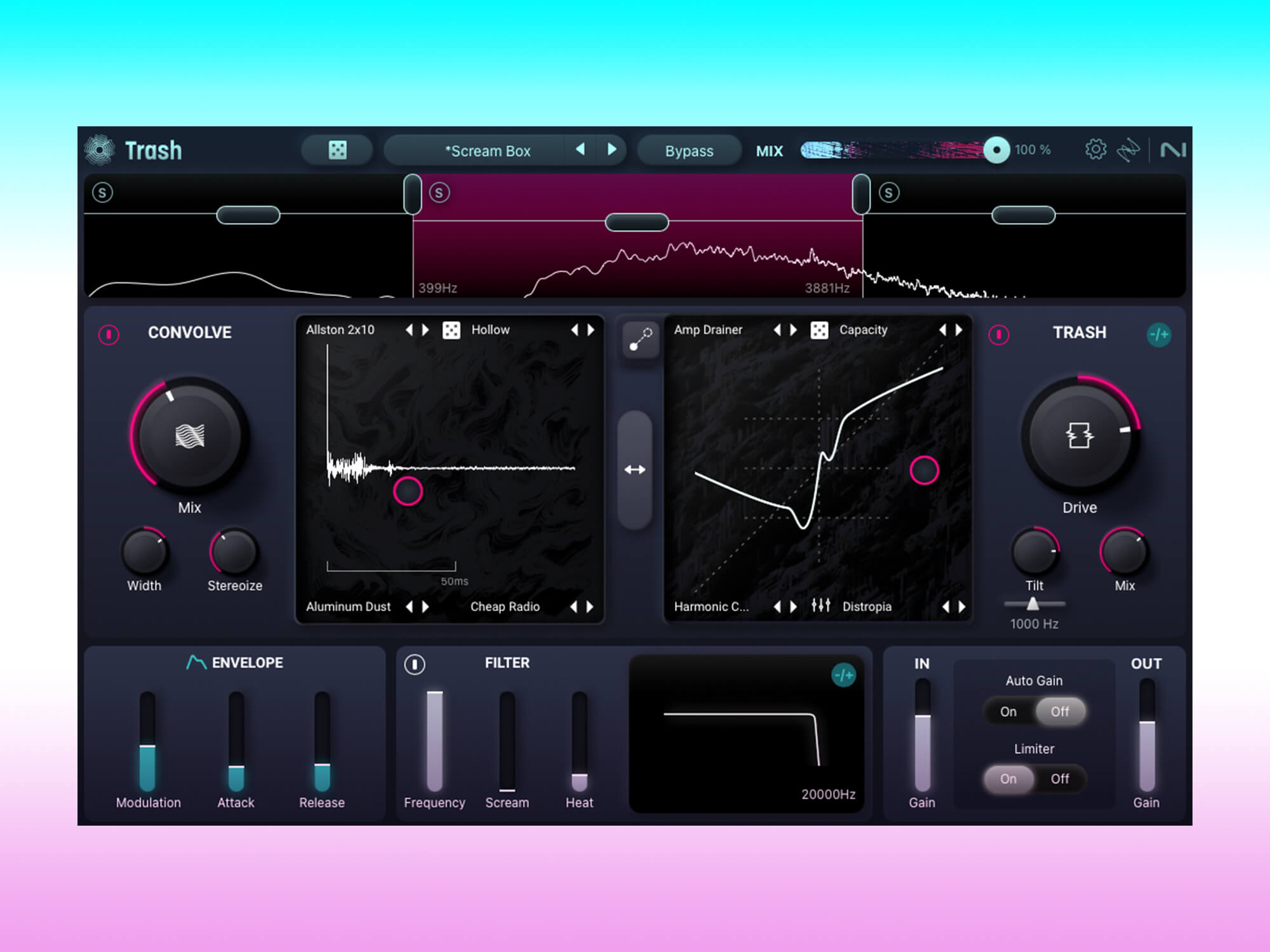An updated iZotope Trash has been released with a new interface and expanded multi-band processing. iZotope Trash is described as a modular distortion effect suitable for processing individual signals and tracks, as well as groups, buses, sends and entire mixes. The instrument offers a large selection of distortion options with the ability to morph between them using the XY pad.
The new version of the plugin has a changed interface, multi-band processing and other changes.
iZotope Trash became the company’s first major tool after it became part of Native Instruments. The company notes that a major update to the third version of the plugin was made possible by merging with a larger player in the market, which provided additional sources of funding.
The main module of the plugin – Trash – is designed to determine distortion settings. The plugin is equipped with 60 types of distortion, while users can combine up to four effect options and work with them simultaneously. The interface also contains an XY pad that mixes the selected effects and determines their final ratio in the signal.
It is noted that distortion can be given additional dynamics and movement by modulating the Drive knob. For example, you can control the intensity of distortion depending on the signal or highlight certain frequencies in the sound. The latter will allow you to emphasize any important points in the signal or the entire composition, the developers believe.
The plugin also received a Convolve space module with a large set of presets. Users can also load their own impulses and convolutions to add more dimension and uniqueness to the sound. The section also received an XY pad for combining several convolutions with each other, and the behavior of the pad can be automated.
One of the main updates to the third version of iZotope Trash was the expanded multi-band processing section, which allows you to assign separate distortion and convolution algorithms to specific frequency ranges. The section is combined with a set of common controls, giving users “a powerful tool for creating interesting moments in their music.”
A number of tools have also been added to the plugin for deeper shaping of the final sound. For example, the signal can be passed through an envelope follower with four different receivers or sent to a self-oscillating filter for additional timbre processing.
Additionally, the plugin received signal level controls at the input and output, a limiter and a separate function for automatic gain adjustment. The latter, according to the developers, will simplify working with the processed signal.

